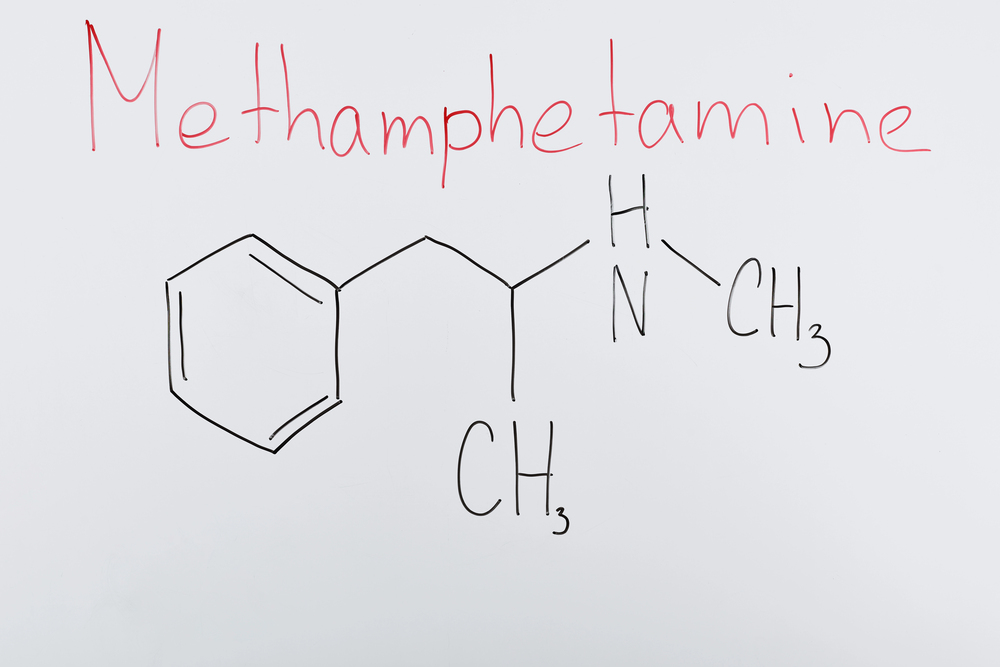Methamphetamine, commonly known as meth, crystal meth, ice, or crank, is a powerful and highly addictive stimulant that affects the central nervous system. Originally developed for medical use, methamphetamine has become a widespread illicit drug with devastating effects on individuals and communities worldwide. This comprehensive guide aims to provide an in-depth understanding of methamphetamine, its impact on physical and mental health, signs of abuse, and the avenues available for treatment and recovery. By increasing awareness and knowledge about meth, we hope to contribute to prevention efforts and support those affected by its use.
Table of Contents
ToggleWhat Is Methamphetamine?
Methamphetamine is a synthetic stimulant drug that belongs to the amphetamine family. It is chemically similar to amphetamine but has more potent effects on the brain and body.
- Chemical Composition: Methamphetamine hydrochloride is the crystalline form used illicitly.
- Medical Use: Prescribed in rare cases under the brand name Desoxyn for attention deficit hyperactivity disorder (ADHD) and obesity.
- Illicit Forms: Often produced in clandestine laboratories, resulting in varying purity and added toxic substances.
Street Names
- Crystal meth
- Ice
- Glass
- Crank
- Speed
- Chalk
Methods of Use
- Smoking: Using a glass pipe or heating on foil.
- Injecting: Dissolving in water and injecting intravenously.
- Snorting: Inhaling the powdered form through the nose.
- Oral Ingestion: Swallowing pills or capsules.
How Methamphetamine Affects the Body
Methamphetamine exerts profound effects on the central nervous system by increasing the release of neurotransmitters, particularly dopamine, norepinephrine, and serotonin.
Short-Term Effects
- Increased Alertness: Heightened focus and wakefulness.
- Euphoria: Intense feelings of pleasure and well-being.
- Increased Physical Activity: Hyperactivity and restlessness.
- Reduced Appetite: Leading to weight loss.
- Rapid Heart Rate and Elevated Blood Pressure: Cardiovascular strain.
- Hyperthermia: Elevated body temperature.
- Dilated Pupils and Dry Mouth: Physical signs of use.
Long-Term Effects
- Addiction: Chronic meth use leads to physical and psychological dependence.
- Neurotoxicity: Damage to brain cells, particularly dopamine neurons.
- Cognitive Impairment: Memory loss, decreased attention span, and impaired judgment.
- Emotional Disturbances: Anxiety, depression, aggression, and mood swings.
- Psychosis: Paranoia, hallucinations, and delusions.
- Physical Deterioration: Severe dental problems (“meth mouth”), skin sores, and weight loss.
- Cardiovascular Issues: Increased risk of heart attack and stroke.
- Infectious Diseases: Higher risk of HIV/AIDS and hepatitis due to needle sharing.
The Science Behind Methamphetamine Addiction
Dopamine and the Brain’s Reward System
- Dopamine Release: Meth causes an excessive release of dopamine, reinforcing drug-taking behavior.
- Reward Pathway Alteration: Repeated use changes brain structures associated with pleasure and reward.
- Tolerance Development: Users need higher doses to achieve the same effect.
- Withdrawal Symptoms: Depression, fatigue, and intense cravings when not using.
Brain Imaging Studies
- Structural Changes: Reduced gray matter in areas responsible for decision-making and impulse control.
- Functional Impairment: Decreased activity in the prefrontal cortex affecting judgment and behavior.
Recognizing the Signs of Methamphetamine Abuse
Physical Signs
- Dramatic Weight Loss: Due to decreased appetite.
- Dental Problems: Severe tooth decay and gum disease (“meth mouth”).
- Skin Sores and Lesions: From scratching and poor healing.
- Poor Hygiene: Neglect of personal care.
- Hyperactivity or Agitation: Restlessness and excessive talking.
- Dilated Pupils and Eye Movement: Rapid or irregular eye movements.
Behavioral Signs
- Paranoia and Suspicion: Unfounded beliefs about others.
- Hallucinations: Seeing or hearing things that aren’t there.
- Aggressive or Violent Behavior: Increased irritability and hostility.
- Social Withdrawal: Isolation from friends and family.
- Erratic Sleep Patterns: Long periods of wakefulness followed by excessive sleep.
- Financial Problems: Unexplained need for money or missing valuables.
Psychological Signs
- Mood Swings: Rapid changes in emotional state.
- Anxiety and Depression: Persistent feelings of sadness or nervousness.
- Impaired Judgment: Risky behaviors without considering consequences.
- Memory Loss: Difficulty recalling recent events.
Health Risks and Complications
Cardiovascular Issues
- Heart Attack: Due to increased heart rate and blood pressure.
- Stroke: From damaged blood vessels in the brain.
- Arrhythmias: Irregular heartbeat leading to potential cardiac arrest.
Neurological Damage
- Seizures: Due to overstimulation of the brain.
- Movement Disorders: Such as Parkinson’s-like symptoms from dopamine neuron damage.
- Psychiatric Disorders: Long-term mental health conditions.
Infectious Diseases
- HIV/AIDS and Hepatitis B and C: From needle sharing and risky sexual behaviors.
- Skin Infections: Due to open sores and compromised immune system.
Reproductive Health
- Pregnancy Complications: Increased risk of premature birth, low birth weight, and developmental issues in infants.
- Sexual Dysfunction: Decreased libido and performance issues.
Impact on Personal Life
Relationships
- Strained Family Ties: Trust issues and conflicts with loved ones.
- Neglect of Responsibilities: Failing to fulfill roles as a parent, partner, or friend.
- Domestic Violence: Increased risk of abuse within the household.
Employment and Finances
- Job Loss: Due to poor performance or absenteeism.
- Financial Instability: Spending money on drugs leading to debt.
- Legal Problems: Arrests for possession, trafficking, or related crimes.
Legal Consequences
- Criminal Charges: Possession, distribution, or manufacturing meth is illegal.
- Incarceration: Potential jail or prison sentences.
- Loss of Custody: Children may be removed from the home.
Treatment and Recovery Options
Recovering from methamphetamine addiction is challenging but achievable with the right support and interventions.
- Acknowledgment and Willingness to Change
- Self-Recognition: Admitting there is a problem.
- Commitment: Willingness to seek help and engage in treatment.
- Detoxification
- Medical Supervision: Managing withdrawal symptoms safely.
- Supportive Care: Providing a stable environment during detox.
Withdrawal Symptoms
- Fatigue and excessive sleepiness
- Increased appetite
- Depression and anxiety
- Cravings for meth
- Psychosis (in severe cases)
- Behavioral Therapies
- Cognitive Behavioral Therapy (CBT): Identifying and changing negative thought patterns.
- Contingency Management (CM): Providing incentives for maintaining sobriety.
- Motivational Interviewing (MI): Enhancing motivation to change behaviors.
- Matrix Model: A comprehensive approach combining therapy, education, and support.
- Support Groups
- 12-Step Programs: Such as Crystal Meth Anonymous (CMA).
- Peer Support Groups: Sharing experiences and strategies.
- Dual Diagnosis Treatment
- Addressing Co-occurring Disorders: Treating mental health issues like depression, anxiety, or PTSD alongside addiction.
- Medication-Assisted Treatment
- Emerging Therapies: Research is ongoing for medications that may help reduce cravings and support recovery.
- Aftercare and Relapse Prevention
- Ongoing Therapy: Continued counseling to maintain sobriety.
- Sober Living Homes: Structured environments promoting recovery.
- Developing Coping Strategies: Managing triggers and stress.
Supporting a Loved One with Meth Addiction
- Educate Yourself
- Understanding Addiction: Learning about meth and its effects.
- Recognizing Signs: Being aware of behavioral and physical indicators.
- Open Communication
- Express Concern: Talk openly without judgment.
- Listen Actively: Allow them to share their feelings.
- Encourage Professional Help
- Offer Assistance: Help find treatment options.
- Support Their Decision: Be patient and understanding.
- Set Boundaries
- Protect Yourself: Establish limits to safeguard your well-being.
- Avoid Enabling: Do not support behaviors that facilitate drug use.
- Seek Support for Yourself
- Counseling: Consider therapy to cope with the situation.
- Support Groups: Connect with others in similar circumstances.
Prevention Strategies
- Education and Awareness
- Community Programs: Participate in local initiatives to spread information.
- School-Based Education: Implement programs targeting youth.
- Early Intervention
- Risk Assessment: Identify individuals at risk.
- Counseling Services: Provide resources before addiction develops.
- Policy and Enforcement
- Regulation of Precursor Chemicals: Control substances used in meth production.
- Law Enforcement Collaboration: Work with authorities to reduce supply.
Statistics and Data
- Global Impact: Methamphetamine is one of the most widely abused illicit drugs worldwide.
- United States Data:
- Usage Rates: Approximately 1.9 million people aged 12 or older reported using meth in the past year (NSDUH, 2019).
- Overdose Deaths: Meth-related overdose deaths have been rising, with over 12,000 fatalities in 2018.
- Economic Costs: Meth abuse contributes to billions of dollars in healthcare, crime, and lost productivity costs.
Expert Insights
Dr. Emily Harris, Addiction Specialist:
“Methamphetamine addiction is a multifaceted problem requiring a comprehensive treatment approach. Behavioral therapies, support networks, and addressing co-occurring mental health issues are vital components of successful recovery.”
Dr. Robert Thompson, Neurologist:
“The neurotoxic effects of meth are profound, leading to long-lasting or even permanent changes in brain function. Early intervention is crucial to mitigate these effects.”
Frequently Asked Questions
Q1: Can meth addiction be treated successfully?
A: Yes, with a combination of behavioral therapies, support systems, and sometimes medications, individuals can recover from meth addiction.
Q2: How long does meth stay in the body?
A: Meth can be detected in urine for up to 3-5 days, in blood for about 1-3 days, and in hair follicles for up to 90 days after use.
Q3: Is relapse common in meth addiction recovery?
A: Relapse is a possibility in any addiction recovery process. Ongoing support and relapse prevention strategies are essential.
Q4: What are the signs of meth overdose?
A: Symptoms include chest pain, rapid or irregular heartbeat, difficulty breathing, severe agitation, hallucinations, high body temperature, and loss of consciousness. Immediate medical attention is required.
Q5: How does meth use affect pregnancy?
A: Meth use during pregnancy can lead to miscarriage, premature birth, low birth weight, and developmental issues in the child.
Actionable Steps for Individuals
- Seek Professional Help
- Contact a Healthcare Provider: For assessment and treatment options.
- Access Resources: Utilize hotlines and local services.
- Build a Support Network
- Family and Friends: Engage trusted individuals for support.
- Support Groups: Join groups for shared experiences and encouragement.
- Develop Healthy Habits
- Exercise Regularly: Physical activity promotes well-being.
- Balanced Diet: Proper nutrition aids recovery.
- Mindfulness Practices: Techniques like meditation can reduce stress.
- Avoid Triggers
- Identify High-Risk Situations: People, places, or activities associated with drug use.
- Create a Safe Environment: Remove substances and paraphernalia.
- Set Realistic Goals
- Short-Term Objectives: Focus on daily or weekly achievements.
- Long-Term Vision: Maintain motivation for sustained recovery.
The Role of Renew Health in Methamphetamine Recovery
At Renew Health, we are committed to providing comprehensive, compassionate care tailored to each individual’s needs.
Our Services Include:
- Personalized Treatment Plans: Addressing physical, psychological, and social aspects.
- Experienced Professionals: A multidisciplinary team of doctors, therapists, and counselors.
- Evidence-Based Therapies: Utilizing proven methods like CBT and the Matrix Model.
- Family Support Programs: Involving loved ones in the recovery process.
- Aftercare Services: Ongoing support to maintain sobriety.
Your journey to recovery starts here. Let Renew Health guide you toward a healthier, fulfilling life.
Conclusion
Methamphetamine is a dangerous and addictive substance with severe consequences for individuals and society. Understanding the effects of meth, recognizing the signs of abuse, and knowing the available treatment options are crucial steps toward combating this crisis. Recovery is challenging but possible with the right support, professional help, and personal commitment. By fostering awareness, promoting prevention, and providing effective treatment, we can make a significant difference in the lives of those affected by methamphetamine addiction.

